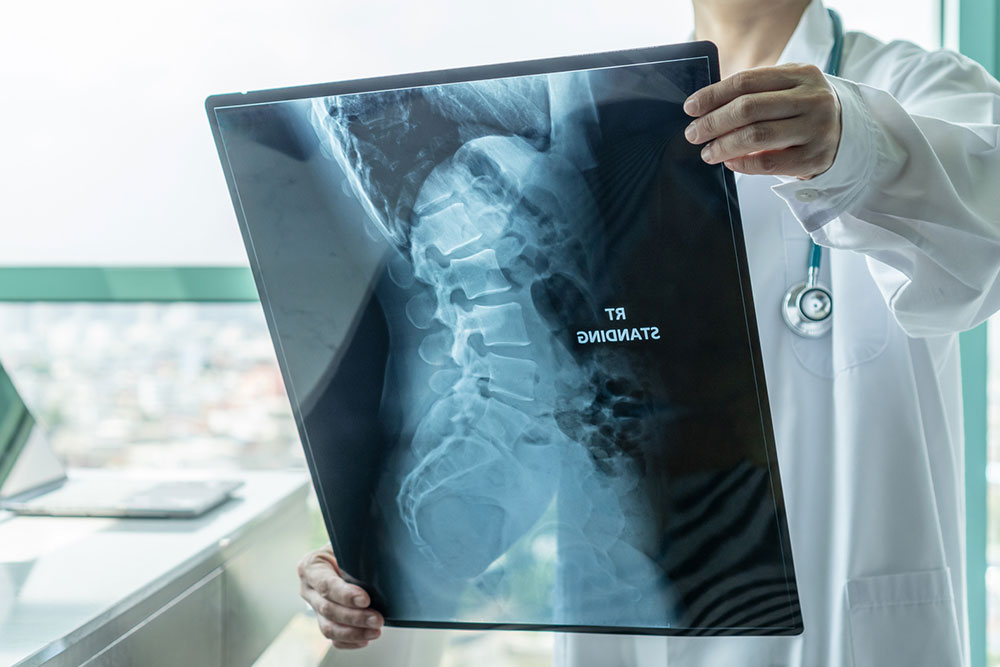8 Signs of Cervical Spondylosis
Cervical spondylosis is a common condition that affects the discs and neck joints. Statistics suggest that more than 85% of people in the later stages of their life are affected by the condition. Regular activities like using computers, driving, or other tasks that involve the neck being in the same position for a prolonged period can lead to this condition. It is important to recognize its symptoms for early diagnosis and timely treatment.

1. Headaches
People with cervical spondylosis experience frequent headaches that seem to originate from the base of their neck. These are called cervicogenic headaches and commonly occur during the early stages. The pain can start at the base of the neck and radiate upward to the head. It can often be debilitating and interfere with one’s daily life. The pain may start as dull discomfort that progresses to intense, throbbing pain. Movement of the neck can worsen the headache and sometimes cause a dull ache around the eye socket.
2. Neck pain and stiffness
Neck pain and stiffness are common early signs of cervical spondylosis. The discomfort can range from dull to sharp stabbing pains. Besides neck pain, those with cervical spondylosis also experience stiffness in their neck. The discomfort is more pronounced in the morning or after long periods of inactivity. As the condition progresses, one may experience pain and discomfort around the neck and shoulders. This discomfort can be alleviated with gentle neck movements and a warm compress. The stiffness can limit neck movement, hindering daily activities. Some may experience worsening pain with physical activity, stress, or poor posture. If one experiences chronic neck pain, one should consult a doctor and seek treatment to prevent the condition from progressing.
3. Restricted range of motion
Cervical spondylosis can also limit the neck’s range of motion. This symptom is often caused by the degeneration of cervical spine discs or the formation of bone spurs. In addition, one might be unwilling to try to improve the range of motion, as the movement can worsen neck pain and headaches. One may have difficulty moving the neck side-to-side or up and down. Issues like high levels of inflammation and muscle tightness can also restrict one’s range of movement. Turning the head towards the back can also be particularly painful for those with cervical spondylosis.
4. Muscle weakness and spasms
In the early stages of the condition, muscle spasms are a common symptom. A muscle spasm occurs when the muscle in the body contracts involuntarily. It can be painful. These spasms can also restrict the range of motion of the neck and shoulders. Spasming muscles tend to weaken over time, making it difficult for one to carry heavy objects, engage in physical activities, or carry out daily tasks. Muscle spasms should be taken seriously as they can indicate a range of underlying conditions. As the condition progresses, the weakness in the neck muscles can worsen, and one may need to use a neck brace to help with the pain and discomfort.
5. Grinding sensation
Another early symptom that is not very common is the grinding sensation in the neck when moving, sometimes accompanied by a popping sound. It can be a worrying and alarming sign, as one may not know the cause. The grinding or popping occurs due to roughened joints in the neck and shoulder region. When one moves the neck, the cartilage and bone interact, generating a noise or grinding sensation. It is important to note that it is a harmless symptom. The sensation or sound can be more pronounced during sudden movements.
6. Numbness and tingling
Cervical spondylosis can cause one to experience numbness or a tingling sensation. It is also known as feeling “pins and needles” in the arms and hands. This symptom is caused by nerve compression, which can worsen the pain and stiffness. These sensations can affect the grip strength and dexterity of the patient’s hands. Persistent numbness can make it difficult to hold objects, button clothes, and write. In severe cases, these symptoms can become constant and debilitating, significantly affecting quality of life.
7. Morning stiffness
Morning stiffness is a common issue associated with the lack of activity during the night. It can sometimes be a sign of cervical spondylosis. This stiffness typically improves with movement throughout the day. Gentle stretching and warm showers are easy ways to alleviate this symptom. Regular exercise and proper sleeping posture can also reduce morning stiffness.
8. Difficulty swallowing
Some people with cervical spondylosis might also experience difficulty swallowing. This condition is medically known as dysphagia. Cervical spondylosis can impact various parts of the body aside from the neck. When it starts impacting the esophagus, one might experience difficulty swallowing. While this symptom is rare, it can be distressing. Those affected may struggle while eating and experience the sensation of food being stuck in the esophagus. It can lead to bouts of coughing and choking. This can aggravate their neck pain and headaches.